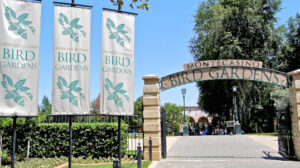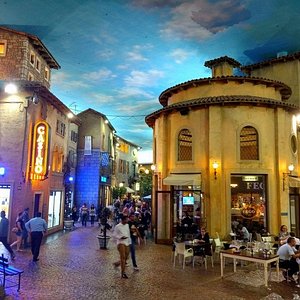Top Guidelines Of Johannesburg North Attractions
Top Guidelines Of Johannesburg North Attractions
Blog Article
More About Johannesburg North Attractions
Table of ContentsSee This Report about Johannesburg North AttractionsThe 4-Minute Rule for Johannesburg North AttractionsSome Ideas on Johannesburg North Attractions You Need To KnowNot known Facts About Johannesburg North AttractionsSome Ideas on Johannesburg North Attractions You Need To Know5 Easy Facts About Johannesburg North Attractions Explained
The city expanded on the edge of the Witwatersrand Main Coral reef, a subterranean stratum of gold-bearing quartz-silica corporation that arcs for hundreds of miles underneath the Highveld - Johannesburg North attractions. Many of the gold mines in the city discontinued operation in the 1970s, yet in its day the Witwatersrand gold market accounted for even more than 40 percent of the globe's yearly gold manufacturing.Johannesburg has a temperate climate. Summer season temperatures balance regarding 75 F (24 C); winter months temperatures average regarding 55 F (13 C) and only periodically dip listed below cold. The city appreciates concerning eight hours of sunshine daily in both winter season and summertime. Rain averages about 28 inches (700 millimetres) per year, however the total differs substantially from year to year.
What rain the city receives falls nearly specifically in the summertime months, frequently in stunning late-afternoon electrical tornados., where many residents still count on coal for gas.

Unknown Facts About Johannesburg North Attractions
The equilibrium of the city is occupied by whites. Lodging varies in character and high quality. Soweto is well-known for its limitless rows of municipally developed, two-room matchbox homes, yet it also has a few prosperous enclaves in addition to teeming squatter camps, where 10s of thousands live without water, electricity, or sanitation centers.
Physical development, although rather restricted by transport, proceeded promptly as immigration to South Africa, and Johannesburg in particular, enhanced significantly.
Many bad suburbs were combined, with inadequate blacks and whites cohabiting, although the well-off suburbs were generally reserved for whites. This transformed with the election of the National Event in the 1948 elections, that began to formalise the system recognized as discrimination. Apartheid formally designated which suburban areas each race can live in under the Team Areas Act.
The previous system of eleven phoned number areas was reorganised in 2006. Marshalltown, as seen from the top of the Carlton Centre. The M1 and M2 run behind the structures, and the southern suburban areas prolong past the freeway boundary. The inner city of Johannesburg lies within the city's Region F. The estimated population of the area is 200,000, [] The number of individuals living in the internal city on an informal basis is unknown, as numerous are unlawful immigrants. Most higher-income locals and white individuals have actually relocated to the north suburbs and have been replaced by lower-income black individuals. The unemployment, education, and age accounts of the location are all unknown, as a result of the trouble of obtaining reputable information concerning the location.
A Biased View of Johannesburg North Attractions
Centred on the CBD, the area includes the residential areas of Yeoville, Bellevue, Troyeville, Jeppestown, and Berea to the eastern. To the west it infects Pageview (Johannesburg North attractions) and Fordsburg. There are little industrial parks to the south, such as City West-Denver and Benrose. pop over here Around 800,000 commuters go through the inner city each day, and it operates as a local purchasing node for visitors from the southerly suburban areas. Yeoville and Bellevue have a mix of apartment buildings and single domestic devices on tiny great deals. The region is situated on a hilly divide that runs from eastern to west.

Johannesburg Stadium, a training ground for both the Golden Lions and Orlando Pirates, is nearby. The eastern suburban areas of Johannesburg lie in the city's 7th [] and 9th [] areas. The area is also functionally incorporated with East Rand boundary towns beyond the main limit of Johannesburg, such as Bedfordview and Edenvale (both component of Ekurhuleni Metropolitan District).
The Best Guide To Johannesburg North Attractions
R. Tambo International Airport). The eastern residential areas are some of the oldest locations of Johannesburg, there are big neighborhoods of Jewish and other European histories, most of the population is English talking. There are 3 fairway in addition to a number of protected ridges with viewsites. There are a number of well-developed and up-market home entertainment and purchasing locations in the eastern such as the Eastgate Shopping Center and the Greenstone shopping center.
The area is mostly composed of old "matchbox" houses, or four-room homes built by the government, that were constructed to give inexpensive accommodation for black employees throughout racism. Soweto is an acronym, meaning "South Western Townships". Road after road in this location is additional resources lined with matchboxes; however, there are a couple of smaller locations where prosperous Sowetans have actually built homes that are much more similar in stature with those in more upscale suburban areas.
Hostels are another popular physical function of Soweto. Initially developed to house male migrant workers, several have been boosted as residences for pairs and households. The N1 Western Bypass skirts the eastern border of Soweto. The suburban area was not historically allowed to develop work centres within the area, so practically all of its citizens are travelers to various other components of the city.
All about Johannesburg North Attractions
The N1 Western Bypass links the northern suburbs with the north-western suburbs. The domestic locations in the northern residential areas are primarily formal, without significant locations of informal real estate, or housing that does not have an irreversible framework. This is an established area, there is a pattern of land why not try this out use modification from household to commercial, particularly along primary arterial roadways and around well established nodes.
The location is well attached to roadway networks, especially along the north-south axis developed by the M1 and N1. Roads to the eastern and west are less well developed, as there are no highways travelling in that direction. Towards the northern boundary of the city, the density of advancement reduces, leaving big areas of undeveloped land around Midrand.
The Buzz on Johannesburg North Attractions
The very first suburban area to the north of the central city is Parktown, which is located on a hill forgeting the inner city and Hillbrow. It has numerous rich citizens and Edwardian-style manors, along with the Education and learning and Clinical schools of the College of the Witwatersrand. The large concrete Charlotte Maxeke Johannesburg Academic Healthcare Facility controls the sky line of Parktown.
Report this page